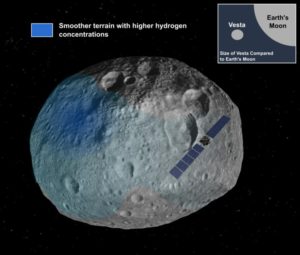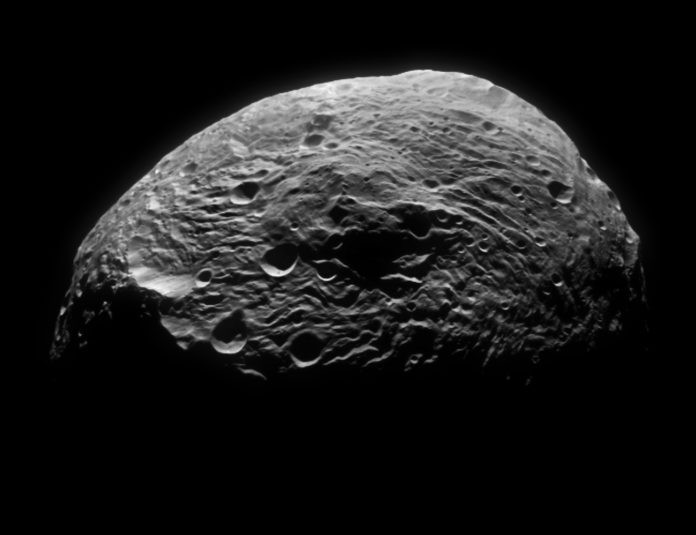New research has been carried out over at the USC Viterbi School of Engineering that has revealed real proof of ground ice on the protoplanet Vesta. This study was just one part of an ongoing project sponsored by NASA’s Planetary Geology and Geophysics program to try and improve current methods for detecting water in terrestrial and planetary subsurfaces through the use of microwave imaging techniques and radar.

It was led by research scientist Essam Heggy and graduate student Elizabeth Palmer and was conducted in the Ming Hsieh Department of Electrical Engineering at USC Viterbi and took over three years to complete.
Vesta is a protoplanet that’s situated in between Mars and Jupiter. Because it’s so big, researchers believe it to have its own core, similar to that of our own. And, because it’s located in the asteroid belt it’s often subject to collisions between asteroids among themselves and with other planetary bodies.
Discovering ice on the protoplanet is a major leap forward in understanding the evolution and transport of water-rich materials through the Milky Way and beyond. The team explored the surface texture of Vesta using a special method called “bistatic radar” from the Dawn Spacecraft.
They chose this type of radar as it was like “seeing a flame from a lighter in the middle of the day from the opposite side of the United States,” said Heggy. “I am excited that we were able to perform such an observation on Vesta. At USC we have been contributing to testing and developing several bistatic radar methods to explore water and ice on planetary surfaces and arid areas of Earth.”
More News to Read
- Researcher Discovered a New Way of Eco-Friendly Disposal for Data Security and Healthcare
- NASA’s Ocean Observation Reveals Sea-Level Fingerprints
- Chinese Scientists Create Device That Converts Blood Flow Energy into Electricity
- Researchers Revealed a New Clinically Tested Drugs that Inhibits the Growth of Tumours
- What Do You Think About Clothes that Grow With Your Child?

